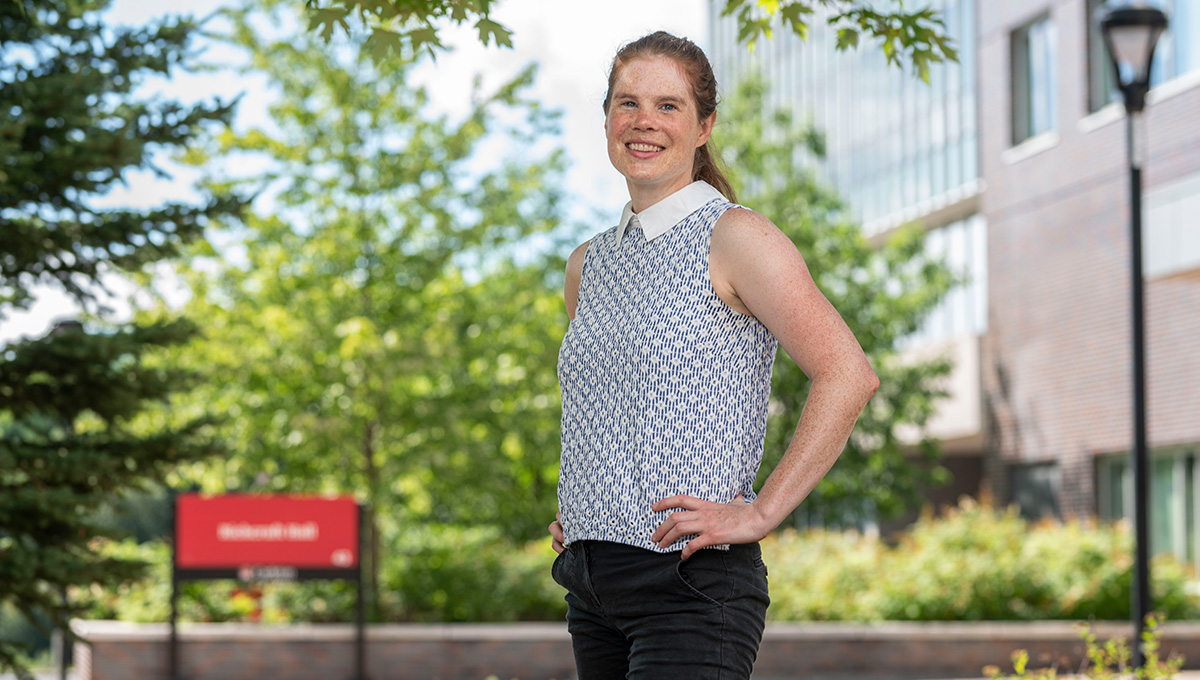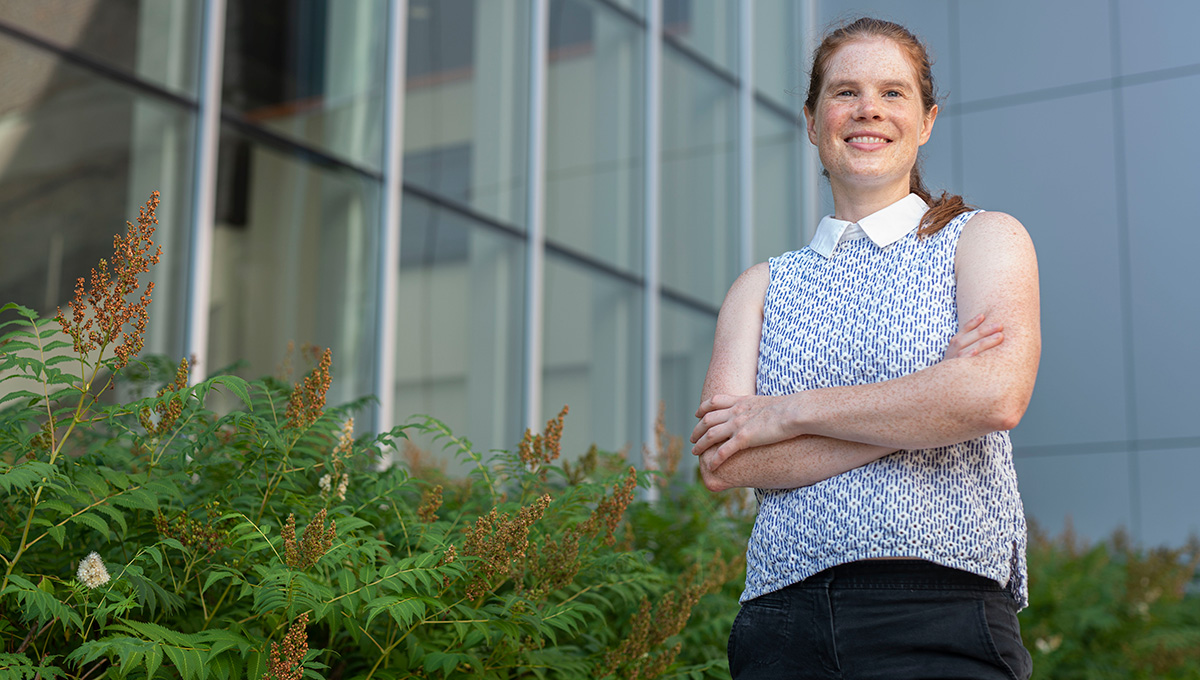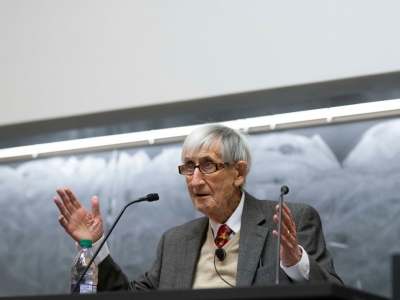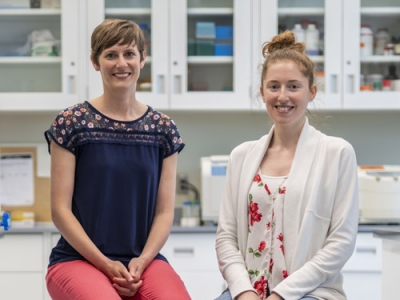By Lesley Barry
Photos by Chris Roussakis
As a poster designed to disrupt stereotypes and inspire careers in chemistry, it was simple.
The image: a man watching a polar bear amid the Arctic snow. The caption: “Not all chemists wear white coats.”
Its effect on Amy Rand, then newly graduated with a Bachelor of Science in chemistry, was electrifying.

Prof. Amy Rand
“The world of chemistry opened up for me at that moment,” Rand recalls.
“Being outside in nature was a big part of my childhood and really shaped who I am, and I suddenly realized that I could combine these two worlds that I loved.”
Now an assistant professor in chemistry and biochemistry in Carleton University’s Department of Chemistry, Rand combines environmental chemistry—the study of how chemicals move through and interact with our environment, whether outside or inside our homes—with toxicology. Her particular focus is on a class of pollutants called poly- and perfluoroalkyl substances, or PFAS, which have rung alarm bells among scientists, environmentalists and policy-makers.
“One of the main challenges of PFAS,” says Rand, “is their persistence. Because they don’t break down or biodegrade, they accumulate over time. They were first synthesized in the 1950s and have been found in the environment ever since.”
They are also ubiquitous. The incredibly strong bonds formed by carbon and fluorine atoms linking together can be used to make items greaseproof, waterproof or stain-resistant. PFAS appear in an immense range of consumer products, including non-stick cookware, cosmetics and cleaning products, and they have widespread applications in industry.

Compounds Enter Blood Stream
Despite research linking PFAS exposure with a range of health impacts such as reduced immune function, decreased fertility and obesity, and despite some of the oldest PFAS formulations being banned because of their association with various cancers, thousands of newer, proprietary compounds remain in use.
“Virtually every blood sample taken from anyone in North America will show levels of PFAS,” reports Rand.
“One aspect of my research looks at how our bodies work to detoxify them—and if we can’t eliminate them, what effect they have on cell function.”
Her lab also looks at how they come into our bodies in the first place. “Indoor dust is a hotspot for chemical accumulation, and depending on their size, dust particles can be ingested or inhaled. We examine the chemicals that can adhere to inhaled dust and what the consequences might be for our lungs.”
It’s sobering work, but Rand’s enthusiasm is palpable.
“The most exciting aspect is when you come across a question or a knowledge gap. By designing and working through an experiment, your results can help answer a larger question or make an impact on their own. There is also,” she adds, “the fun of seeing the research play out, with all of the hiccups and the trouble shooting.”
She also relishes multidisciplinary collaboration.

Capital Region a Bonus for Research
“As a toxicologist and environmental scientist, it’s wonderful to be in the National Capital Region with Environment Canada and Health Canada and potential partnerships with scientists (who have) their own expertise. If you can’t translate your work across disciplines, then that project just doesn’t have the same potential.”
Microscopes and petri dishes were a regular part of Rand’s childhood, given that both her parents were biologists. “Science started out as a game for me. But my parents encouraged me to explore different disciplines and figure out what I was passionate about on my own.”
In fact, alongside her bachelor’s in chemistry, Rand took a degree in pipe organ performance. “Doing two different degrees took five years instead of four, but it was worth it. I always loved music growing up.”
Plus, music and chemistry have their own kind of harmony.
“There were many times when I solved a scientific problem by playing through musical pieces. Music created a space where I could step away from science. I think it allowed for a kind of slow thinking.”
Preludes and fugues by Bach are particularly helpful. “There are a lot of patterns in his music, and piecing them together requires problem-solving by a different part of your brain.”
Nowadays, Rand often wears that white coat, and she has yet to make a field trip to the Arctic, but she’s happy where she is. “A career in science can be serendipitous,” she says. “Defined by the people you connect with and experimental results, it’s a journey of discovery.”

Tuesday, August 4, 2020 in Biology, Environment and Sustainability, Faculty of Science, Research
Share: Twitter, Facebook



